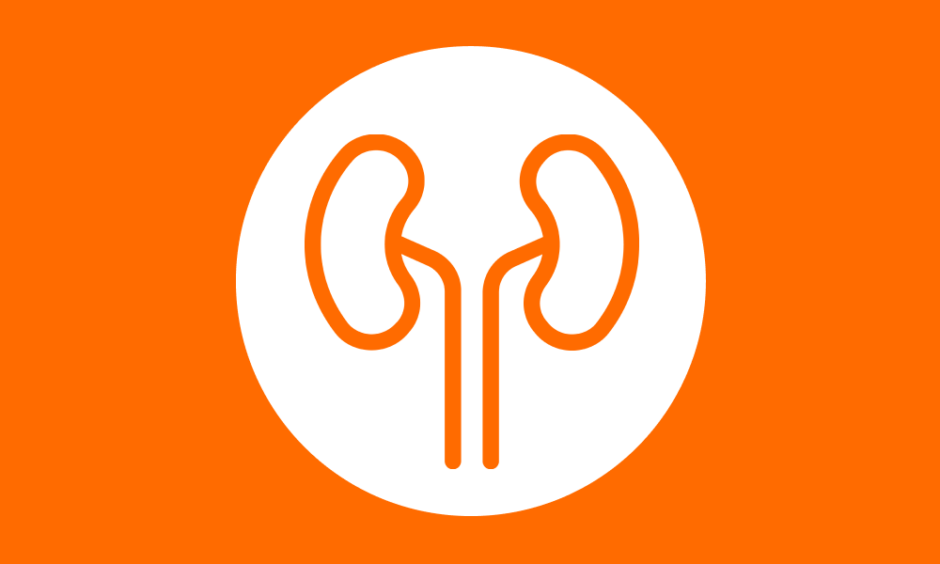WELCOMED by the graceful vocals of the Italian Tenors, Christopher Chapple, European Association of Urology (EAU) Secretary General, opened what he described as a “vibrant programme” at the 38th Annual EAU Congress, held in Milan, Italy between the 10th-13th March 2023. Boasting a rich history of art, architecture, and culture, and home to Leonardo da Vinci’s famous mural ‘The Last Supper’, over this weekend Milan traded its role as a global hub for fashion and design to host the largest urology event in Europe.
Returning to Italy after successful meetings there in 2008 and 2013, EAU23 offered the chance for key opinion leaders to convene and share their expertise. In this special year, celebrating the 50th anniversary of the EAU, the congress aimed to enrich patient care by allowing experts to participate in live surgeries, case discussions, debates, and other insightful presentations which comprised the scientific programme.
A total of 9,219 on-site registrations and 581 virtual registrations brought combined participation to an impressive figure, close to ten thousand. Over 4,500 abstracts were submitted, and the top tier of these were presented over the course of the 4-day event, found alongside an insightful selection of urological guideline updates, and game-changing plenary sessions.
During the General Assembly, having worked within the EAU for 30 years, and after an 8 year period of leadership, an emotional Chapple handed his Secretary General’s medal over to his successor, Arnulf Stenzl, EAU Adjunct Secretary-General, with the statement, “I know the Assocation is in very strong hands.” He sincerely thanked his colleagues for all of their contributions, and the tireless support he received in his many years of service. Chapple’s successor, Stenzl, stated: “I am proud to be able to serve this great organisation, and am looking forward to stepping into some large shoes.”
Several new EAU Honorary Members were welcomed; Allen Chiu, Yang-Ming University, Taiwan; Christopher Evans, University of California, USA; Helmut Haas, University of Mainz, Germany; Alejandro Rodríguez, Wake Forest University School of Medicine, North Carolina, USA; Monique Roobol, Erasmus University Medical Centre, Rotterdam, the Netherlands; and Alexandre de la Taille, Assistance Publique–Hôpitaux de Paris, France. The prestigious Willy Gregoir Medal, for significant contribution to the development of the urological specialty in Europe, was awarded to Luis Martínez-Piñeiro, La Paz University Hospital, Madrid, Spain. James Catto, University of Sheffield, UK, received the Frans Debruyne Life Time Achievement Award for longstanding and important contributions to the activities and development of the EAU.
Each year, the best European paper published on minimally-invasive surgery in urology is awarded the Hans Marberger Award. The 2023 recipient was Riccardo Campi, Careggi University Hospital, Florence, Italy. The Innovators in Urology Award is not given annually, but recognises inventions and clinical contributions that have had a major impact on influencing the treatment and/or diagnosis of urological disease. This was given to Peter Wiklund, Karolinska University Hospital, Sweden. A new award was also granted in the form of the Ernest Desnos Prize for extraordinary contributions to the field of urological history, and this was presented to Remigio Vela Navarrete, Universidad Autónoma de Madrid, Spain. Milan local Eugenio Ventimiglia, San Raffaele Hospital, Milan, Italy, received the Prostate Cancer Research Award for the best paper published on clinical or experimental studies relating to prostate cancer, and Rachel Giles, Van Hall Larenstein University of Applied Sciences, the Netherlands, received the first ever Patient Advocacy Medal of Excellence for effective advocacy and a positive impact on European urology. The Crystal Matula Award for a young, promising European urologist went to Juan Gómez Rivas, Universidad Complutense de Madrid, Spain; you can find an insightful interview with Gómez Rivas later in this issue.
Peter Albers, the new Chair of the EAU Scientific Congress Office, brought the weekend to a close at the ‘Best of EAU23’ session of take-home messages. In his final remarks, he thanked delegates for their attendance, and outlined plans for the EAU24 congress, to be held in Paris, France, in April 2024.
This issue of EMJ Urology contains our scientific highlights from the 38th Annual Meeting and 50th anniversary of the EAU, and an interview with the new Secretary General, Arnulf Stenzl. Included in this review of the congress is a selection of the cutting-edge press releases shared, on topics such as digital rectal examination and active monitoring of prostate cancer, genetic testing of urine for bladder cancer, and an update to the safety profile of vasectomies.
Do Patients Prefer Male or Female Urologists?
PREFERENCE of the gender of a urologist depends on the patient’s condition, according to data presented at EAU23. While the field involves very intimate conditions, patients do not always prefer to be treated by someone of the same gender. Patients with painful conditions, for example, prefer to be treated by a female doctor.
Researchers from the University of Munich, Germany, created a survey to look at whether patients associate certain skills to a gender, and how their choice would change depending on the situation or their symptoms. In total, 1,012 patients who visited the hospital during 2021 filled out the questionnaire. Of those, approximately three-quarters were male, just under one-quarter were female, and three patients were non-binary. The cohort included all ages and educational and economic backgrounds.
Patients were asked about the impact of their conditions on their lives, and whether they thought a male or female urologist would understand them best. Two-thirds of participants expressed a preference for the gender of their urologist in at least one scenario. While they would usually prefer a urologist of their own gender, in certain situations this was not the case. All patients expressed that they would prefer a male urologist for conditions that were embarrassing, caused them concern or inconvenience, or limited their daily activities. For painful symptoms, however, both male and female patients would prefer a female urologist.
Regarding consultations and surgery, one-third of patients expressed a preference, with a 60:40 split in favour of a male urologist when it came to consultations, and an 80:20 split for operations. Male patients believed male urologists would have more practical skills, while females thought a female urologist would be more empathic. Both genders stated that a urologist of their own gender would be easier to talk to, and would understand their body better.
Researchers concluded that there is a need for a more equal mix of male and female clinicians, as urology remains a male-dominated field. Lead researcher Alexander Tamalunas, University Hospital Munich, stated: “Patients will already find it hard to speak openly to urologists about these conditions, and this may be exacerbated by cultural sensitivities in some communities. It’s vitally important that any additional barriers which we can control, such as the gender of the consultant, are removed, and for that we need to encourage and support more women in the profession.”
UK Study Claims That Vasectomies Are Even Safer Than Reported
VASECTOMIES are much less likely to lead to complications than expected, claims a novel UK study from researchers at the Gloucestershire Hospitals NHS Foundation Trust, where outcomes from over 90,000 vasectomies performed over 15 years were reviewed. Presenting at the EAU23 Congress in Milan, Italy, researchers suggested that the existing leaflets which describe the potential complications to patients are established on obsolete data.
In the UK, approximately 11,000 vasectomy operations are performed annually, with the majority being operated in primary care settings by specialist general practitioners. The Association of Surgeons of Primary Care, headed by Gareth James, collected data from 94,082 vasectomies between 2006–2021, mostly through patient questionnaires. Patients were asked to complete a questionnaire on the day of their surgery, and were asked to report any problems 4 months post-operation.
Julian Peacock, who led the review alongside John Henderson, both of the Gloucestershire Hospitals NHS Foundation Trust, stated: “This large dataset had never been independently analysed, and doing so has enabled us to update the standard complication rates, some of which dated back to the 1980s.”
Researchers reported that approximately 0.12% of patients experienced chronic scrotal pain, one of the most significant complications of a vasectomy. This figure is relatively low compared to the ‘up to 5%’ quoted by the British Association of Urological Surgeons (BAUS) patient information leaflet about vasectomies. The team emphasised how patients can be deterred by the chances of chronic scrotal pain, especially as it is a difficult condition to manage. They expressed the importance of up-to-date data, and how it provides a more coherent understanding of the chances of complications arising. Likewise, the rates of infection requiring antibiotics are quoted as 2–10% in the BAUS statistics, but the researchers found this was closer to 1.3%.
The authors emphasised that vasectomies are a very reliable and safe contraception method. Peacock stated: “These figures might encourage more men to undergo the procedure, so we hope our research will be incorporated in the guidelines that provide information for pre-vasectomy counselling and leaflets.“
Early-Stage Prostate Cancer Screening: Is Digital Rectal Examination Effective?
FINDINGS from the PROBASE multicentre prostate cancer screening study, presented at EAU 2023 in Milan, Italy, on 12th March, reveal that digital rectal examination (DRE) is less effective in identifying early-stage prostate cancer than other detection methods, such as serum prostate specific antigen (PSA) testing.
The PROBASE trial, co-ordinated at the German Cancer Research Center (Deutsches Krebsforschungszentrum [DKFZ]), Heidelberg, Germany, enrolled 46,495 males aged 45 years between 2014–2019, across four university sites in Germany. The two arms of the trial were those who were offered serum PSA testing at 45 years of age, and those offered DRE with delayed PSA testing at 50 years of age.
Of those in the DRE and delayed PSA testing arm, 6,537 patients had a DRE performed. Referral for a follow-up biopsy secondary to suspicious examination findings occurred in 57 patients, and three were subsequently diagnosed with prostate cancer. The detection rate using DRE was much lower than the detection rate using serum PSA testing, with lead study author, Agne Krilaviciute, Division of Personalized Early Detection of Prostate Cancer, DKFZ, highlighting: “PSA testing at the age of 45 detected four-times more prostate cancers.”
The findings imply that DRE as a prostate cancer screening method lacks the sensitivity to detect early-stage disease, which is the main reason for screening. The researchers postulate that this could be explained by tissue changes in early-stage prostate cancer being too subtle to pick up on DRE. The authors further noted, in a separate analysis where MRI scans were performed prior to biopsy, 80% of prostate cancers were located in areas that should be within reach on DRE. However, this was not reflected in the trial findings, which yielded a negative result in 99% of cases.
Moreover, the team suggested that the examination itself may contribute to the low prostate cancer screening participation rate in Germany, and stated that more patients may take up screening if offered serum PSA testing instead.
As a result of the study findings, the researchers are advocating that serum PSA testing and MRI scanning should replace DRE in prostate cancer screening programmes.
Advanced Imaging May Aid Diagnosis and Treatment of Prostate Cancer
PROSTATE-SPECIFIC membrane antigen (PSMA) PET-CT, an advanced imaging method, could aid the diagnosis of prostate cancer by providing a clearer view of suspected tumours during biopsy, and helping clinicians target where to take samples, according to data from the University Hospital Bonn, Germany, presented at EAU23 in Milan. The technique may help clinicians to make better decisions about subsequent treatments.
The DEPROMP trial included approximately 200 males who underwent MRI, PSMA-PET-CT, and biopsy; however, researchers hope to have more than 230 patients enrolled by the end of the trial. Two separate teams of urologists randomly looked at the scans, with one group only seeing the results of the MRI and biopsy without the PSMA-PET-CT data, while the other group was given all the results. The researchers analysed and compared the treatments chosen by the two teams based on the information they were given. They noted that adding the PSMA-PET-CT caused clinicians to change how they would treat patients with clinically significant prostate cancer in 19% of cases, compared to the standard scans. Furthermore, this method helped clinicians detect significantly more significant prostate cancers.
Study lead Philipp Krausewitz, University Hospital Bonn, stated: “It appears to be having an impact in high-risk patients, but we also saw false positives in 6% of patients that meant we needed further investigations. The question we are considering is whether the additional diagnostics are worthwhile.” They explained that clinicians might perform surgery to remove the cancer or give the patient chemotherapy, while it is not clear yet how these decisions will affect patient outcomes. As it is an expensive technique that is not available everywhere, more research is needed to understand how the method can be used effectively, and substantial improvement in diagnostic capability will need to be proven to be cost-effective. However, in the meantime, the technique can be used for selected challenging diagnostic cases, and cases where an MRI cannot be performed.
New Prostate Cancer Surgery Technique Improves Patient Outcomes
LYMPHATIC fluid collecting in the pelvis is one of the most common post-operative complications following robot-assisted keyhole surgery for prostate cancer, affecting around 10% of patients.
New research has shown that a small technical change to this procedure, involving creating a small flap in the peritoneum, can more than halve the incidence of this complication. The small flap is then attached to the pelvis, thus creating a route for the lymphatic fluid to escape from the pelvis into the abdomen, where it is more easily absorbed. These findings, presented at EAU23, could reduce the incidence of lymphocele and associated symptoms, such as pain, pressure on the bladder, swollen legs, and deep vein thrombosis.
Manuel Neuberger, University Medical Centre Mannheim, and Heidelberg University, Germany, outlined: “Previous studies of the technique have been inconclusive, so we designed a larger, more robust trial to ensure our findings were statistically significant.” In total, 550 patients were involved in the trial and were randomly assigned to one of two groups: with or without flap. Four surgeons performed the peritoneal flap procedure, and were only informed whether a patient was to undergo this procedure once the initial operation was complete. The patients were followed for 6 months following the operation, and factors related to the risk of lymphocele, such as diabetes, the extent to which lymph nodes were removed, whether they took anti-coagulants, and the surgeon doing the operation were taken into account.
At the time of discharge, 20 patients in the peritoneal flap group had asymptomatic lymphocele, compared to 46 in the control group. During the follow-up, this had risen to 27 in the peritoneal flap group, but 74 in the control group. Thus, only 10 patients in the peritoneal flap group had developed a symptomatic lymphocele compared to 25 in the control group.
Lead researcher Philip Nuhn, University Medical Centre Mannheim, said: “Using the peritoneal flap reduced the incidence of lymphocele from 9% to less than 4%. We now use this as the new standard in Mannheim, and hope that […] it will become common practice elsewhere as well.”
Delayed Treatment of Localised Prostate Cancer Does Not Increase Mortality Risk
ACTIVE monitoring of prostate cancer has been shown to exhibit the same high survival rates after 15 years as radiotherapy or surgery, according to findings from the ProtecT trial presented at the EAU23 congress in Milan, Italy. This regular surveillance of cancer meant that males were more likely to observe progression or spread, but this was found not to reduce their likelihood of survival.
Lead investigator Freddie Hamdy, University of Oxford, UK, highlighted that the study shows treatment decisions following diagnosis of low- and intermediate risk localised prostate cancer do not need to be hasty. Hamdy said: “A diagnosis of prostate cancer should not be a cause for panic or rushed decision making… Patients and clinicians can and should take their time to weigh up the benefits and possible harms of different treatments, in the knowledge that this will not adversely affect their survival.”
Funding for this study was provided by the National Institute for Health and Care Research (NIHR), involving researchers at the Universities of Oxford and Bristol, and spanning nine UK centres, as the longest investigation of its kind. ProtecT is the first full evaluation of three major treatment options for males with localised prostate cancer: active monitoring, surgery (radical prostatectomy), and radiotherapy.
The study cohort included 1,643 males aged 50–69 years who were diagnosed with localised prostate cancer from a PSA blood test. The research team followed these patients in the UK for an average of 15 years, between 1999–2009. They were randomised into active monitoring (545), radical prostatectomy (553) and radical radiotherapy (545) groups. Mortality rates, cancer progression and spread, and the impact of treatment on quality of life were all measured, with results demonstrating 97% of males diagnosed with prostate cancer survived 15 years, irrespective of the treatment they received. Close to one-quarter of patients on active monitoring had not had any invasive treatment for their cancer after 15 years, and patients from all three groups reported similar overall quality of life. This trial also found that negative impacts of radiotherapy and surgery on urinary, bowel, and sexual function persist much longer than previously thought, for up to 12 years.
Previous research had hinted at a lower survival rate for males on active monitoring over a long time period, but the results from this longitudinal study show that this is not the case, and survival rates remain similarly high across all groups. Jenny Donovan, study co-investigator from the University of Bristol, shared: “Survival no longer needs to be considered when deciding on treatment, as that’s the same for all three options. Now, men diagnosed with localised prostate cancer can use their own values and priorities when making the difficult decisions about which treatment to choose.”
Some of the males who subsequently died of their prostate cancer had been assessed as low risk at diagnosis, which the researchers highlighted as an issue of concern. Peter Albers, chair of the EAU’s Scientific Congress Office, described the implications of this study: “The fact that the greater progression of disease seen under active monitoring didn’t translate into higher mortality will be both surprising and encouraging to urologists and patients.” Albers went on: “It’s an important message for patients that delaying treatment is safe,” and: “It’s also clear we still don’t know enough about the biology of this disease to determine which cancers will be the most aggressive, and more research on this is urgently needed.”
Prediction Bladder Cancer with Urine Gene Tests
BLADDER cancer can be detected years before diagnosis by testing for genetic mutations in urine, according to new research shared at EAU23. Bladder cancer is the fifth most common cancer in the European Union (EU), with 200,000 presentations a year. While 80% of patients survive for a minimum of 5 years after diagnosis if the cancer is detected early, this drops to approximately 50% when patients are diagnosed with advanced disease, which is primarily due to late diagnosis and disease recurrence.
Inspired by previous research identifying genetic mutations associated with bladder cancer, researchers from three countries identified 10 genes that could predict the commonest type of bladder cancer up to 12 years before diagnosis.
The test was trialled at the Tehran University of Medical Sciences (TUMS), Iran, using urine samples from the Golestan Cohort Study, which had tracked the health of >50,000 participants for 10 years. While 40 people developed bladder cancer during this time, only 29 samples could be tested, along with 98 other participants as controls. The researchers were able to accurately predict future bladder cancer in 19 participants (66%), of which 12 (86%) were diagnosed within 7 years of urine collection. Furthermore, the test accurately predicted that 94 controls (96%) would not develop bladder cancer, with no cancer diagnosis being made within 6 years of urine collection.
This was further trialled at Massachusetts General Hospital, Boston, USA, and Ohio State University (OSU), Columbus, USA, with samples from 70 patients with bladder cancer from the day of diagnosis and 96 controls. Mutations were found in 50 (71%) of those with cancer whose tumours were visible during cystoscopy but were not found in 90 (94%) of controls.
Lead Researcher Florence Le Calvez-Kelm, International Agency for Research on Cancer (IARC), Lyon, France, believes that these results demonstrate the potential of genetic urine tests in predicting bladder cancer.








